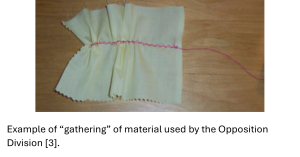Changes being reviewed at the UKIPO design consultation
What are the key areas of reform and why do these proposals matter?
The Enlarged Board of Appeal (EBA) of the European Patent Office has recently delivered the long-awaited decision in case G 1/24, aiming to resolve the uncertainty about how patent claims should be interpreted when assessing patentability. The EBA concluded that claims are the starting point and the basis for evaluating patentability, and that the description and drawings must always be consulted in interpreting those claims.
This decision brings clarity to a key aspect of European patent law and aligns the EPO’s approach with that of national courts and the Unified Patent Court (UPC).
The referral originated from decision T 0439/22 by Technical Board of Appeal, which involved European patent EP3076804 [2] held by Philip Morris. The patent concerns an aerosol-generating article for use in a vaping device. Figure 2 of the patent, reproduced below, illustrates one embodiment of the aerosol-generating article (1000). A key point of contention was the meaning of the term “gathered sheet” (reference 1020 in the figure), which is used in claim 1 to describe the tobacco material.
During the opposition proceedings, the opponent argued that the expression “gathered sheet” lacked a clear and universally accepted meaning in the field. According to the opponent, its definition must therefore be drawn from the patent itself. The opponent referred to paragraph [0035] of the patent, where “gathered sheet” is described as a sheet that is “convoluted, folded or otherwise compressed“. On this basis, the opponent contended that the term includes any sheet deformed substantially perpendicularly to its surface.
One of the cited prior art documents disclosed a tobacco sheet that had been wound into a cylindrical form. Under the opponent’s interpretation, this prior art example would fall within the scope of claim 1 and therefore destroy its novelty.
In response, the patentee maintained that “gathered sheet” is a well-understood term in the tobacco industry. According to the patentee, the expression refers to a sheet that has been folded and convoluted in a way that causes it to occupy a three-dimensional space. An example of a “gathered sheet” consistent with this interpretation, as provided by the Opposition Division, is shown below [3]. A rolled sheet, as disclosed in the prior art, would not qualify as a “gathered sheet” under this interpretation.
The Opposition Division ultimately sided with the patentee and the opponent appealed the decision.
This dispute highlighted a broader and more fundamental legal question: when interpreting claims, to what extent should the description influence the meaning of claim terms (even when the meaning of a term in the claim is not ambiguous)? The Board of Appeal noted that the existing case law on this point was diverging and therefore the Enlarged Board of Appeal (EBA), whose task is to ensure the uniform application of the European Patent Convention (EPC), was asked to rule on which approach is right.


In their decision the Board rejected the notion, found in some case law, that the description and drawings should only be consulted if a claim is ambiguous. It held that this restrictive view conflicts with the wording of Article 69 EPC, the harmonisation goals of the EPC, and the practice of the European Unified Patent Court (UPC) and national courts.
The EBA also explained that assessing clarity itself involves interpretation. Therefore, the description and any drawings must always be consulted when interpreting patent claims for the purpose of assessing novelty, inventive step, or other aspects of patentability.
The EBA’s order is as follows:
“The claims are the starting point and the basis for assessing the patentability of an invention under Articles 52 to 57 EPC. The description and drawings shall always be consulted to interpret the claims when assessing the patentability of an invention under Articles 52 to 57 EPC, and not only if the person skilled in the art finds a claim to be unclear or ambiguous when read in isolation”.
The EBA noted that its conclusion is consistent with the current case law of the UPC, in particular the Court of Appeal’s decision in NanoString Technologies v. 10x Genomics. That decision held that the description and drawings must always be used as explanatory aids when interpreting claims. The EBA emphasised that diverging from such judicial practice would be undesirable and undermine legal coherence across Europe.
Although the Enlarged Board of Appeal did not directly address the contentious issue of whether the description must be amended to align with the claims, the decision did reference the Comments of the President of the EPO. These comments stated that “examiners should require applicants to amend the claims so that the meaning is as clear as possible from the claim wording alone and to adapt the description to these claims” (see paragraph 87 of the Comments). As a result, the decision may have an impact on how strictly examiners enforce the requirement to align the description with the claims during examination.
The G 1/24 confirms that the description and drawings must always be considered when interpreting claims, reinforcing the integrated approach to claim construction. Although the EBA acknowledged the absence of a definitive legal basis in the EPC for this rule, it relied on well-established case law and the need for harmonisation with judicial bodies across Europe.
While the ruling enhances predictability and legal coherence, it remains to be seen how it will influence the ongoing debate over whether the description must always be brought into conformity with the claims.
If you have any questions about this decision or any other intellectual property query, please contact one of our attorneys.